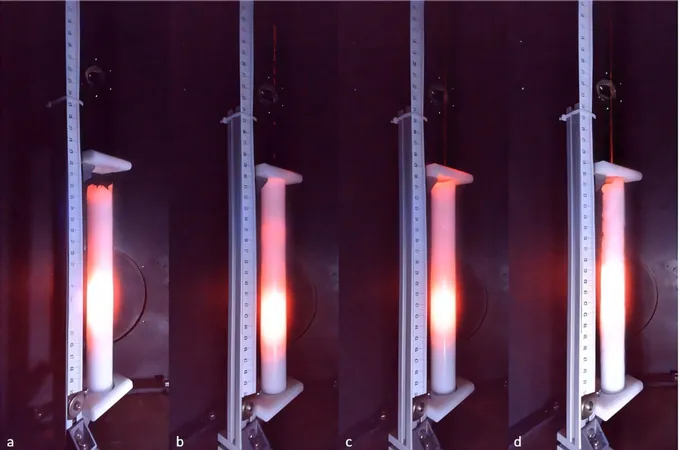
Revolutionary Cas9 Proteins Slash Prime Editing Errors: A Game Changer for Gene Therapy!
2025-09-17
Author: Emma
Transforming Gene Editing with New Innovations
Scientists at MIT have made groundbreaking strides in prime editing, a cutting-edge gene-editing technique with the potential to cure a myriad of diseases. Traditionally fraught with the risk of introducing harmful errors, prime editing has just received a significant upgrade, drastically lowering its error rate and enhancing its safety for future applications.
The Power of Modified Cas9 Proteins
Published in the esteemed journal *Nature*, MIT researchers have effectively harnessed modified versions of Cas9 proteins that not only simplify the gene editing process but also yield more precise results with considerably fewer unintended mutations. According to Phillip Sharp, a senior author of the study, this new methodology does not complicate delivery systems or add excessive steps, making it a leap forward for gene therapy.
Remarkably, the error rate in prime editing has improved from one accident per seven edits to one per 101 in the most utilized editing mode, and from one error in 122 to one in a staggering 543 for high-precision modes!
Safer Treatments on the Horizon
Robert Langer, another senior author, emphasizes the importance of reducing side effects in drug therapies. With innovations like this, gene editing could become not just effective but also a much safer option for a multitude of genetic disorders. Lead author Vikash Chauhan underscores the broad implications: ‘This technology could ultimately correct numerous genetic diseases by addressing small mutations in cells.'
Prime Editing: A Brief History
The journey of gene therapy has evolved significantly since its inception in the 1990s, moving from the virus-based gene delivery methods to sophisticated CRISPR systems. Prime editing, unveiled in 2019, is a groundbreaking advancement that promises unprecedented precision, and recent clinical applications highlight its immense potential.
A Breakthrough in Precision
The MIT team’s research demonstrated that certain Cas9 mutations relax traditional constraints, allowing for more flexible cutting of DNA. This means that the old, unwanted DNA strands are more likely to degrade, enabling new, corrected sequences to integrate seamlessly into the genome without introducing errors.
These improvements have seen error rates plummet to just 1/60th of the original, showcasing the power of this innovative vPE editor, which has been tested in both human and mouse cells.
Paving the Way for Future Research and Treatments
The researchers are now focused on refining the efficiency of these prime editors even further while also addressing challenges in targeted delivery to specific tissues. They anticipate that labs worldwide will adopt this cutting-edge prime editing strategy for a myriad of research applications, enhancing our understanding of genetics and disease.
‘Exciting times are ahead for research and therapy alike,’ Chauhan enthuses, celebrating the potential to transform lives through safer, more effective gene editing.









 Brasil (PT)
Brasil (PT)
 Canada (EN)
Canada (EN)
 Chile (ES)
Chile (ES)
 Česko (CS)
Česko (CS)
 대한민국 (KO)
대한민국 (KO)
 España (ES)
España (ES)
 France (FR)
France (FR)
 Hong Kong (EN)
Hong Kong (EN)
 Italia (IT)
Italia (IT)
 日本 (JA)
日本 (JA)
 Magyarország (HU)
Magyarország (HU)
 Norge (NO)
Norge (NO)
 Polska (PL)
Polska (PL)
 Schweiz (DE)
Schweiz (DE)
 Singapore (EN)
Singapore (EN)
 Sverige (SV)
Sverige (SV)
 Suomi (FI)
Suomi (FI)
 Türkiye (TR)
Türkiye (TR)
 الإمارات العربية المتحدة (AR)
الإمارات العربية المتحدة (AR)